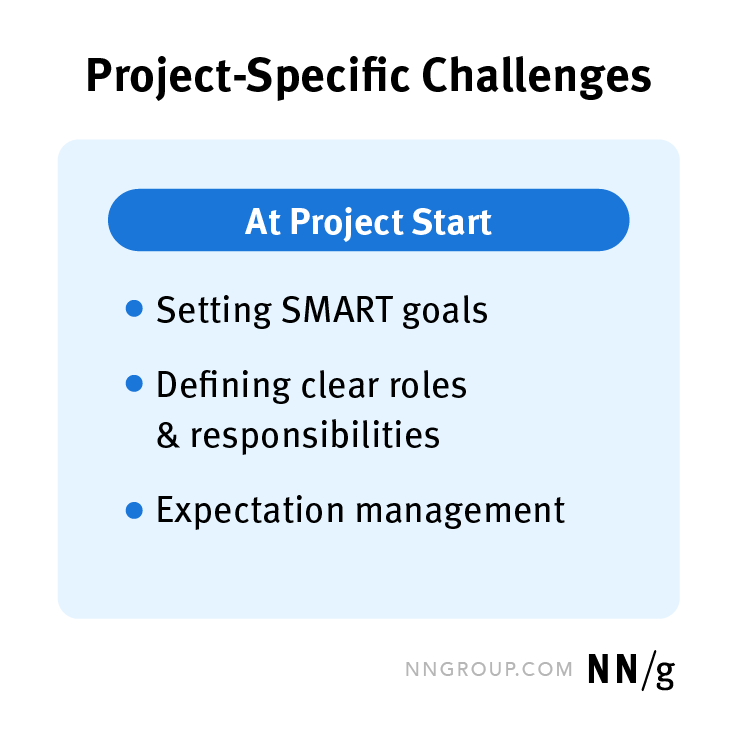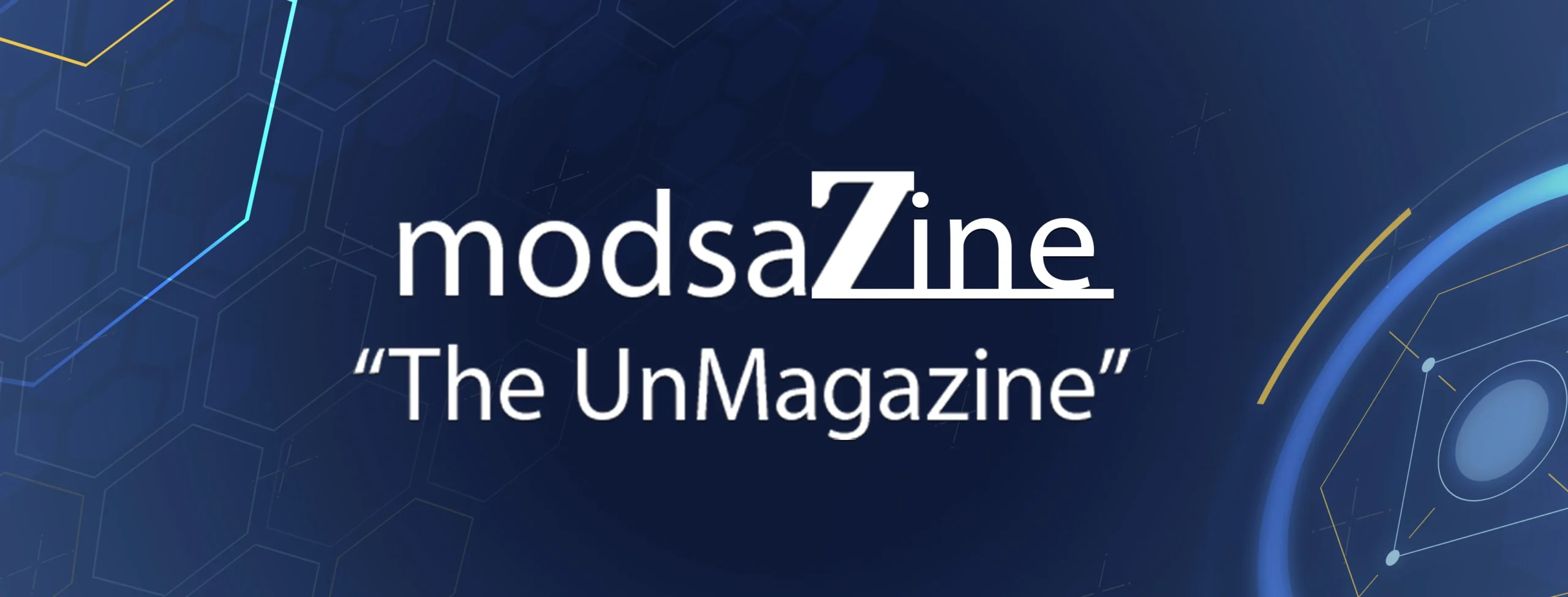Collaborating across teams is an essential aspect of UX professionals’ work. Such collaboration is fundamental to success. On the other hand, failed collaboration can lead to severe consequences, ranging from negative emotions like hate, frustration, and embarrassment, to high turnover rates, increased costs, and reduced revenue for organizations.
This article reports the collaboration challenges experienced by UX professionals in a variety of organizations. It is based on 13 interviews with UX professionals of various backgrounds.
For each challenge, we included strategies to address it.
On This Page:
About The Study
To understand how UX professionals collaborate with other teams, the challenges they encounter, and the strategies they employ to overcome these obstacles, we conducted 13 interviews with UX professionals. We recruited a diverse set of participants:
- Company size: Small, medium, large
- Years of UX experience: 2–20 years
- Location: 9 countries across 4 continents
- Job responsibility: Entry-level, intermediate, mid-level, senior-level, executive-level
- Gender: Female, male, nonbinary
Same Collaboration Challenges Are Present Across Teams and Departments
We started the study with the hypothesis that UX professionals would face different challenges depending on the kinds of teams they worked with. However, our research revealed that most challenges were not team- or department-specific. Only a few challenges were unique to specific team collaborations.
Furthermore, we noticed these challenges were similar across various experience levels and locations. The most significant factors influencing the challenges encountered by UX professionals were the UX maturity level and the size of their organizations.

Poor Collaboration Can Have Severe Consequences
Effective communication and collaboration are crucial for the success of any organization. Unfortunately, certain challenges can arise, leading to a host of problems that impact teams and project outcomes. Our study has identified the most prevalent issues stemming from poor collaboration. They include:
- Products with a poor user experience
- Frustration, disappointment, and confusion among employees
- Feelings of powerlessness, discouragement, and dissatisfaction among employees
- Tension and conflicts within teams and across teams
- Lack of trust between teams
- Increased costs due to duplicated work and the need to fix mistakes
- Decreased revenue and profit
- High turnover rates
Understanding and addressing the problems that can arise when collaborating with others is crucial to fostering a harmonious work environment, improving productivity, and delivering high-quality products that meet the company’s goals and exceed user expectations. Next, we delve into the challenges that UX professionals face when collaborating with other individuals or teams within their organizations.
Collaboration Challenges to Address at the Beginning of Projects
To set teams up for a successful outcome, address the following challenges right from the outset of each project.

-
Setting Goals
One of the main challenges at the beginning of a project is defining goals. Goals can be used as guiding principles during the project and as a measure of success once the project is finished. Good goals are SMART (specific, measurable, achievable, relevant, and time-bound). However, many UX professionals have difficulty setting SMART goals. Some common challenges are:
- UX teams don’t have a clear goal.
- UX teams don’t see the big picture.
- The goals of UX teams are misaligned with those of other teams.
All these challenges lead to situations where there is no consensus on a clear direction for a project. One participant described her situation as follows: “I feel like I’m kind of working into a tunnel. I don’t have perspective very much [which] makes it difficult to justify design decisions.”
-
Defining Roles and Responsibilities
Another critical task to complete before starting a project is defining roles and responsibilities for the project. Every team member should have a good understanding of what their tasks and responsibilities are and, equally important, are not. This aspect is crucial for UX teams because some of their tasks overlap with other departments’ responsibilities. For example, there can be conflicting positions on who owns which part of the project (e.g., research, personas, user flows), who communicates with key stakeholders, who is responsible for high-level decisions, and who is responsible for finding solutions. UX professionals who participated in our study encountered the following challenges:
- Those involved in the project did not have well-defined roles and responsibilities.
- UX teams didn’t receive clear instructions.
- Other teams came up with premature solutions.
One participant stated: “Sometimes there is a gray line between what is UX research and what is product in our organization, or what’s a PM and what’s a UX researcher. This frustrates me because it feels like we’re battling for power.”
-
Managing Expectations
Managing expectations at the beginning of a project avoids later frustration and conflict. Managing expectations is heavily intertwined with setting goals and defining roles and responsibilities. Creating realistic and manageable expectations for all teams requires a shared understanding of each team’s skills, goals, and limitations. The biggest problems that UX teams reported when managing expectations were related to a lack of understanding of other teams’:
- Goals
- Key performance indicators (KPIs)
- Limitations
These problems were bidirectional: either the UX team was missing this information about other teams, or other teams were missing information about the UX team. However, whenever this crucial information was missing, teams had misaligned expectations about the project.
Strategies to Address Collaboration Challenges at the Beginning of Projects:
- Establish clear objectives and measurable key results (OKRs) to guide and track the progress of a project effectively. Utilize OKRs as a valuable tool to align your team, maintain focus, and have a tangible means of monitoring progress.
- To make project roles and responsibilities clear and visible, utilize a flexible responsibility-assignment matrix, such as RACI, which outlines whether individuals should be responsible, accountable, consulted, or informed. A clear visual helps teams identify collaboration points and ensures that productivity remains high throughout the product-development process.
- Align expectations with all teams involved by sharing goals, limitations, and common processes. Exchange information frequently.
Collaboration Challenges to Resolve During Projects
Taking proactive steps to resolve the following obstacles throughout a project will foster effective collaboration among all teams and contribute significantly to achieving the desired outcome.

-
Communicating Effectively
One challenge consistently mentioned by every UX professional we interviewed is effective communication. When effective communication is present, many other challenges can be resolved or minimized. However, a lack of communication can exacerbate existing challenges or give rise to new ones. The most common challenges related to effective communication were:
- Infrequent communication that led to knowledge gaps
- Language barriers between departments, due to the use of specific jargon
- Top-down communication that didn’t allow for the bidirectional exchange of information
- Layered communication that filtered information and delayed the information transfer to the intended person
- A lack of clearly defined communication channels
As a result of these challenges, teams and individuals lacked crucial information necessary to work effectively on their projects. Lack of effective communication hindered both the team’s progress and the overall organization’s goals.
One participant stated: “We had communication problems (…) so the teams hated each other. Due to the communication issues, we ended up redesigning our company’s homepage twice in one year. […] The first time, we all hated it and thought it was bad, (…) but it was out there […]. [The second project] became a lot more collaborative and the whole team was happy with it.”
-
Being Transparent and Sharing Knowledge
When working on projects that involve multiple teams, all should share their data, information, and insights to build common ground and ensure that they are equipped to find the best possible solution. Common challenges that impeded transparency and knowledge sharing were:
- Siloed teams that were unwilling to share their knowledge and data
- Lack of processes and tools for sharing knowledge
One participant described the importance of transparency as follows: “Transparency is not just a buzzword; it is a way of life and collaboration. (…) Transparency, being upfront about what you’re doing and collaborating with the necessary people that will be working on the product, will build a better product at the end of the day.”
-
Creating a Shared Sense of Ownership
A shared sense of ownership means “getting everybody on board” (study participant). In other words, everybody involved in a project should feel responsible for it and share the same vision. The UX professionals in our study put much effort into creating a shared sense of ownership and saw improved outcomes when they succeeded. One participant stated: “Never make somebody feel like their ideas are worthless. See how you can pull the best parts of those ideas and put them in the pot with the rest of the components that everybody else is contributing. By the end of the project, once the soup is ready, you have a little bit of contribution from everybody, and it really feels collaborative. It feels like the best you all could have done because you all participated.”
The major challenges to creating a shared sense of ownership were:
- Struggling to include teams in the process from start to finish
- Negative ownership, where teams or individuals felt that they exclusively owned a project and didn’t want other people or teams to interfere with them
- Headstrong teams that considered their ideas as superior and were not interested in any form of collaboration but rather saw it as an obstacle to accomplishing their goals
There needs to be regular communication, transparency, feedback, and a healthy exchange of information so that all teams involved feel responsible for a project and are willing to collaborate.
Lacking a shared sense of ownership can lead to extreme situations. One study participant recalled: “It was horrific. People were on the point of being fired for lack of cooperation and insubordination. It was extremely difficult.”
-
Providing and Receiving Feedback
A healthy feedback culture helps build both transparency and a shared sense of ownership. A culture that encourages feedback benefits from multiple perspectives on a problem, supports understanding of the other teams’ limitations and goals, and often leads to outcomes that are “more usable, buildable, and maintainable” (study participant).
The main challenges that UX professionals encounter in creating a healthy feedback culture are:
- Struggle to receive feedback from stakeholders
- Little time for reflection due to a focus on moving forward
One participant, who had a troubled work relationship with her product manager, stated, “I think the problem with the lead PM is that we don’t have enough time to just talk and feedback each other. We’re just constantly on the doing side of things, rarely on the reflection part. So, I think that also hurts our relationship a bit because we (…) don’t make the time to have these critical conversations.”
Strategies to Address Collaboration Challenges During Projects
- Improve the quality of communication within and among teams by:
- Implementing a regular communication cadence. Many teams have daily or weekly standup meetings to ensure constant communication.
- Using plain language, free of unnecessary jargon or complex terms, to communicate effectively and concisely. Even experts prefer this communication style, but especially nonexpert stakeholders will benefit from using plain language.
- Communicating directly with the person who needs information. This way, you can share any details they might need. Avoid one-way communication that passes through multiple intermediaries, as it could lead to unintended alterations in the message, just as in the famous telephone game.
- Proactively and frequently share knowledge and increase transparency to create a shared sense of ownership across teams by:
- Maintaining a shared document that provides a high-level overview of projects, including information on who’s in charge and where to find additional information. This document should live in a place that is accessible to all stakeholders.
- Communicating asynchronously (e.g., through Slack, Teams, Jira, Trello, email). Sharing asynchronously can save time and allow stakeholders to access shared information when needed.
- Communicating synchronously (e.g., meetings, demos, and presentations). These methods allow for real-time questions and answers.
- Include teams in the process from start to finish. Proactively reach out to other teams to inform them of your process, offer to involve them, and ask for feedback, from the very early steps of a project. By doing so, you will not only profit from valuable information (with which other teams may reciprocate), but you might also create a shared sense of ownership, which can drastically improve the outcome of your project.
Organization-Level Collaboration Challenges
In addition to project-specific challenges, deeper, structural problems might be ingrained in your company’s culture. Tackling these challenges will demand continuous, long-term efforts. Nevertheless, successfully addressing them can significantly increase your organization’s UX maturity.

-
Dealing with a Lack of Trust
Many UX professionals whom we interviewed mentioned that they experienced a lack of trust from other teams. Lack of trust was rooted in a poor understanding of what UX was. It was, therefore, most prevalent in low UX-maturity organizations. This lack of trust was displayed in several ways:
- Other teams took over activities that fell into the responsibility of the UX team.
- Critical information, such as research, was unavailable to the UX team.
- Opinions and advice from the UX team were disregarded.
- Other teams came up with premature solutions, which were implemented.
A lack of trust can result in UX professionals feeling frustrated and unappreciated, up to a point where they intend to leave their jobs. One participant said, “I’m considering transitioning, like moving into a product-manager position or being a UX generalist in another company where I have more say in terms of product efforts.”
-
Handling the Deprioritization of UX
Another challenge most prevalent in low-UX-maturity organizations was the deprioritization of UX work. Deprioritization of UX manifested in several ways:
- UX was not integrated into projects and was regarded as merely a nice-to-have rather than essential.
- UX teams were excluded from critical project components, such as research activities, and in some cases, they were denied access to the resulting data and insights.
- The company was protective of its customers, so they didn’t allow the UX team to interact with them to gather valuable insights.
- The organization was protective of new products, fearing that information may leak to competitors, clients, or the public. Consequently, they prohibit activities, such as usability tests on prototypes, that reveal the product prematurely.
The deprioritization of UX can severely impact how effectively UX teams can operate and their ability to perform critical activities that ensure that products are user-friendly. One participant, working for a marketing company, described his situation: “Design [doesn’t have] a seat on the table. Design is viewed basically as value add. And by that, I mean, it’s free to our clients who purchase a product through us.”
-
Structural Challenges
In our study, we observed general structural challenges that are equally applicable to all teams, not just UX. For the sake of completeness, they are listed below:
- Company politics that impede the team’s ability to perform effectively
- An organizational structure that hinders effective collaboration and is based on misaligned goals, unclear or overlapping responsibilities, frequent organizational changes, and lengthy approval processes
- Time-zone and remote-work challenges that can impact the quality and frequency of information exchange and communication
These are just some general structural challenges that can occur. However, we observed that these tend to grow with the size of an organization.
Strategies to Address Organization-Level Collaboration Challenges
- Support ideas with research. Data and evidence help other teams understand your point of view and build credibility and trust over time.
- Facilitate the sharing of UX knowledge with other teams. Over time, this strategy can enhance other teams’ familiarity with UX topics and raise awareness of how incorporating UX efforts in projects can contribute to achieving their respective goals. Typical forms of knowledge sharing include:
- Presentations (e.g., lunch and learns)
- Internal newsletters, websites, or blogs
- Educational videos
- Writeups
- Workshops
- Documentation
- Address challenges that occur at the beginning and during projects. For example, if you are transparent, improve communication, share knowledge, nourish feedback, define roles and responsibilities, and create a shared sense of ownership, you will alleviate or even eliminate some of the structural challenges of your organization.
Conclusion
Collaboration is essential for all teams and departments. However, as our study revealed, UX teams may face more significant challenges due to their relatively less established position compared to that of other departments. By acknowledging and addressing these challenges, UX teams can enhance their organization’s UX maturity, improve crossfunctional collaboration, and play a vital role in spreading UX knowledge to advance the field.
The strategies for addressing these challenges are not one-size-fits-all. Instead, they serve as a starting point to raise awareness and support the development of customized approaches tailored to each unique circumstance.


